Orangeries vs Conservatories – What is the difference between a conservatory and an orangery?
Many of our customers ask us what the difference is between a conservatory and an orangery? So, we thought we’d come up with a handy blog on the topic!

Orangeries are far less common than conservatories and you’d be surprised at just how many of our customers had never even heard of an orangery before they had consultation with us. So, what is the difference between a conservatory and an orangery you ask? Well, there are actually a few distinct differences. These distinctions could have a big impact on the type of extension you choose!
If after reading this comprehensive blog, you think you’re in need of some expert advice, contact the West Midland Double Glazing team today for a FREE consultation and we’d happily provide our two cents to help you in your decision-making process!
What is an Orangery?
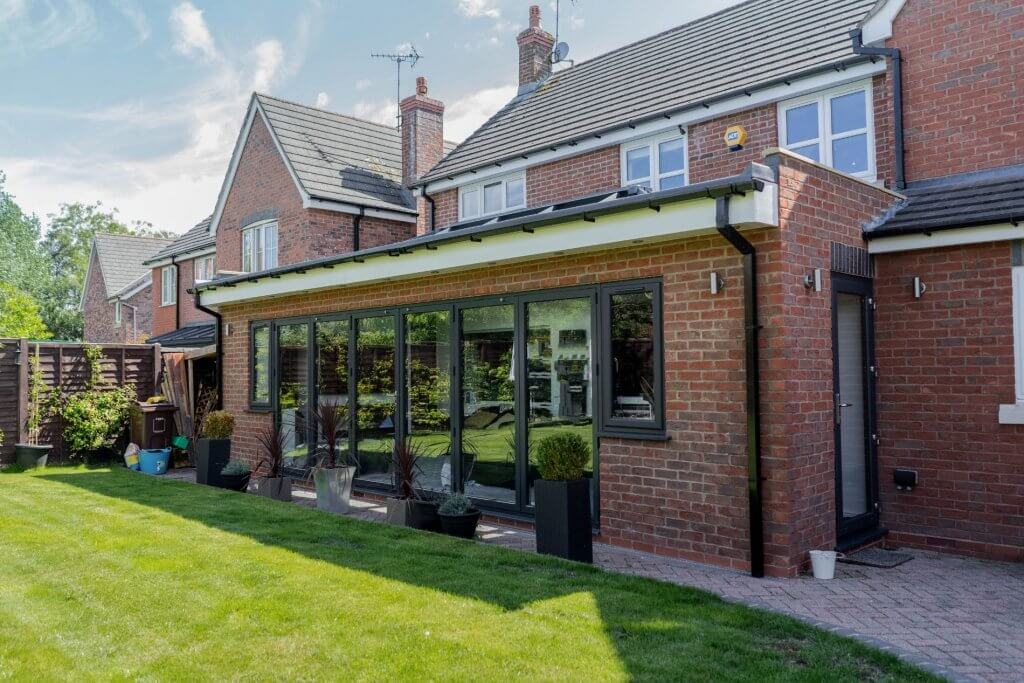
An orangery is a brick structure with large windows, a flat roof and a glass lantern. Conservatories on the other hand, are glass structures with brick bases and a pitched glazed roof. It’s worth noting that orangeries came first historically and conservatories actually developed from them!
Centuries ago during the Renaissance period, huge strides had been made in glass technology. For the first time, the manufacturing of very large panes of clear glass was possible which subsequently led to the production of large glass windows.
Buildings with large windows became a more frequent sight across Europe and there were even structures made primary from glass. It was in these constructions where citrus fruits and exotic plants could grow whilst being protected from the colder outdoor temperatures during the winter months.
The original renaissance orangeries of the 17th century featured solid roofs. They also had north-facing walls which provides the most direct sunlight throughout the day, especially in the winter months. A stove was also commonplace to keep the environment warm as were wooden shutters to help retain that heat.
During the 19th century, the glazed lantern roof became the popular option for orangeries as they allowed more natural light into the room. Despite the fruit growing capabilities of the structure, orangeries quickly became a symbol of status amongst the affluent. They were a means to show off ornate architecture as well as collections of exotic vegetation.
The Classic Orangery
The classic orangery style is very traditional in it’s look with brick pillars, internal pelmet on the inside and a curved cornice. When you think old fashioned stately home elegance, an orangery will most likely come to mind.
The Lantern Orangery
The lantern orangery works in pretty much any type of property, be it traditional or contemporary. The beautiful roof lantern is undoubtedly the standout feature of the structure. It allows for flexible lighting designs and deep perimeter ceilings.
The Contemporary Orangery
When combining super-insulated columns with an isolated pelmet and decorative cornice, you have yourself a very contemporary orangery design. To add an ultra-modern touch, add wide-open swing and slide or bi-foldings doors. The perfect stylish accompaniment of which the frames are customisable to the colour of your choosing!
What is a Conservatory?
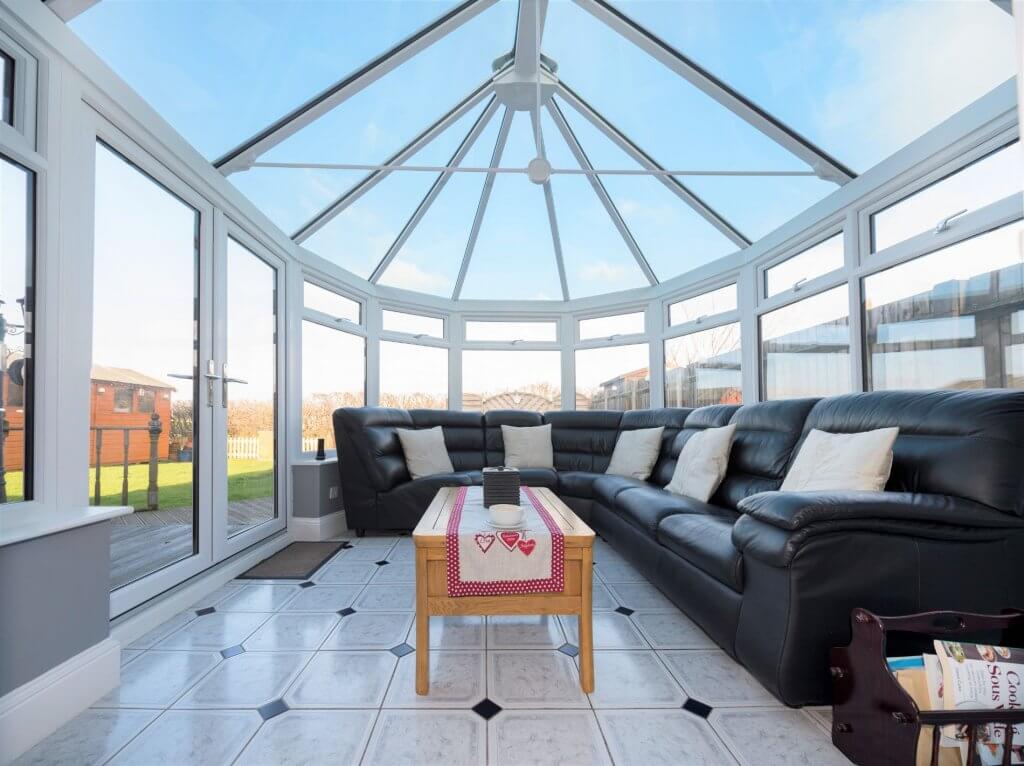
As stated earlier, conservatories are glass structures with brick bases and typically have a pitched roof comprised of glazing.
During the 1800s, fully gazed structures in the form of conservatories came into existence. The Chance Brothers, who we’ve spoken about in another blog titled “The History of Double Glazing in Birmingham” (go check that out), were key in bringing about the glazing revolution in Britain. It was their sheet glass which was used in the momentous Crystal Palace in 1851.
Over the course of the century, the country became more and more enamoured with these glass structures. Most cities had their own grand conservatories which housed rare exotic plants and sometimes birds and animals. The Botanical Gardens in Birmingham for example, opened its doors on June 11th, 1832.
The World Wars meant that conservatory constructions were halted but the 1950’s and 1960’s saw a resurgence in demand. Sunrooms became the first glazed extensions attached to normal houses, made from aluminium frames and single glazed windows.
A decade later, the idea of what we now know as the modern conservatory was starting to develop. When uPVC frames were brought to the forefront in the early 1980’s, the conservatory skyrocketed in popularity and became a status symbol of families across the country.
The Classic Conservatory
Most likely, this is what immediately comes to mind when you think “conservatory.” A structure with a completely double glazed roof offering the most classic of aesthetics. An unmatched amount of natural light is able to flood into your home, making it a great living space for gatherings or socialising.
The Solid Roof Conservatory
Solid roof conservatories are a fantastic alternative to the traditional glazed or polycarbonate conservatory roofs atop across many builds in the UK. As well as aesthetic appeal, solid roof conservatories come with added strength, durability and thermal efficiency.
The Polycarbonate Roof Conservatory
Out of all roofing materials, polycarbonate is the most cost-effective option on the market. It’s cheaper than glass roofs and far less expensive than tiled or other solid roof options. Strong, light-weight and easy to install, polycarbonate conservatories are a great option for those working to a strict budget.
So, what actually is the difference between a conservatory and an orangery?
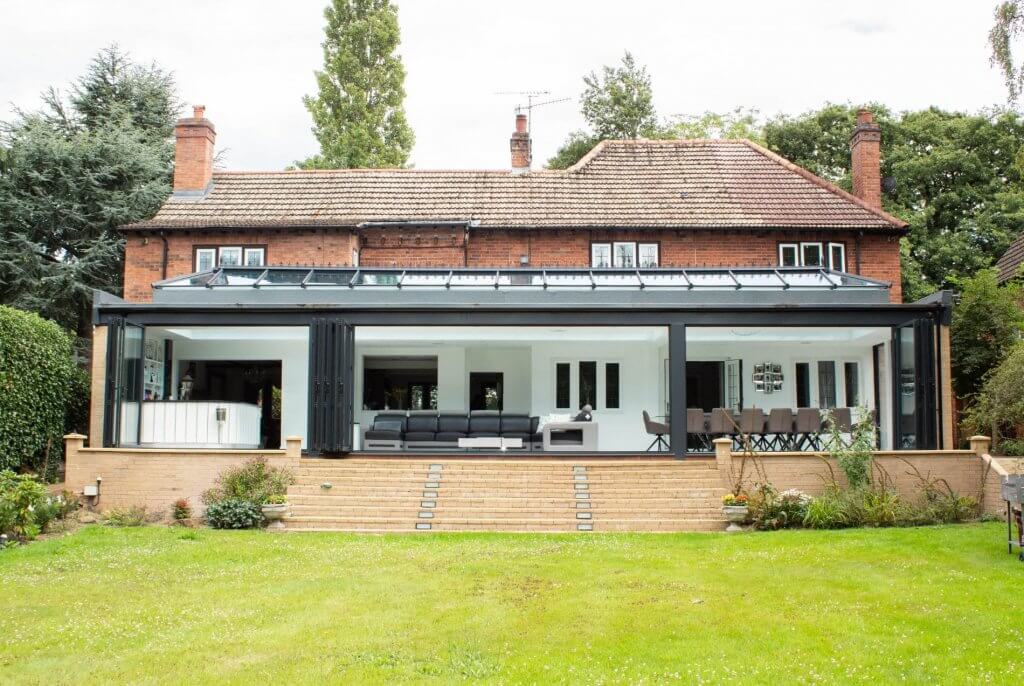
Now that the history lesson is over, let’s get on to how to distinguish between the two. The styles of each did differentiate themselves from one another very easily. Traditionally, orangeries were grand buildings used to grow orange trees and other exotic plants in large period homes.
However, as time passed, orangeries started to be seen more frequently in smaller homes and became much more alike to conservatories. The dissimilarity has become far less apparent, making the research and buying process much harder for homeowners.
The main way to tell the difference between a conservatory and an orangery is the amount of glass in the structure but there are many other contrasting features to consider:
The Roofs
When it comes to the roofing, an orangery typically features a flat solid roof with a central glass lantern and an internal pelmet around the perimeter of the ceiling. Less than 75% of the overall roof is made from glass. On the other hand, conservatories typically feature a pitched roof that is comprised of more than 75% glass.
The Walls
The walls of an orangery tend to feature large, tall windows of which the glass take up less than 50% of the wall. In conservatories, the walls are primarily glazed and the walls are made up of 50% or more glass.
The Construction Location
Orangeries can be standalone structure or build to the side or rear of a home. Conservatories are build adjoined to a house, separated by a transitional door or window.
The Frame
A conservatory will feature a fully glazed frame housed in polycarbonate panels with a low brick wall base, whereas orangeries will have brick built corner pillars and often more substantial brick walls. These can also be made form a super-insulated aluminium column. Both of which certainly add a sense of grandeur to the structure.
The Shape
An orangery will either be square or rectangular. A conservatory on the other hand can be either of those, as well as P-shaped, T-shaped, Lean-To, Victorian, Gable-End, Georgian, Edwardian and Lanterned.
The Look
Typically, an orangery will be built in a style to replicate that of the main house. Conservatories, as they are primarily glazed structures, will often not look like the main home at all.
Is an orangery or conservatory the right option for you?
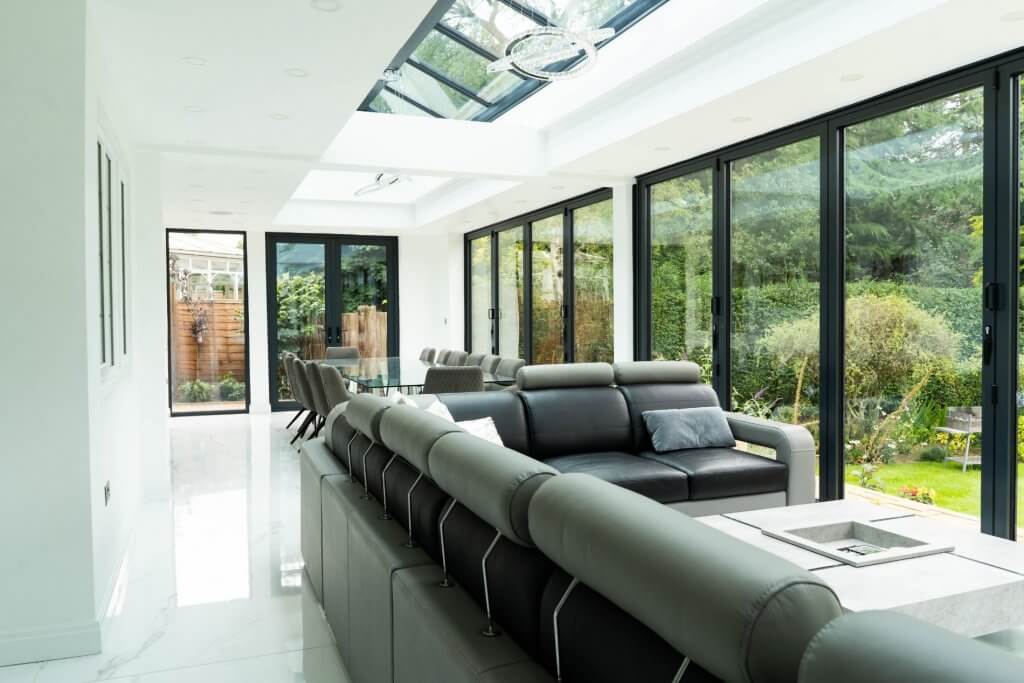
There are a few different factors to consider when answering this question:
- How do you intend to use this additional living space?
- How do you want your extension to look?
- Do you mind fluctuations in temperature or would you prefer more climate control?
- Would you be using the space all year round?
- Do you desire a standalone structure or one that is attached to the side or rear of your home?
- Do you want the space to be flooded with light or one that’s bright but avoids glare?
- How much privacy do you desire?
- Are you working to a budget?
Your answers to these questions will determine whether you should opt for an orangery or conservatory. Let’s take a more in depth view on each…
Should I choose a conservatory?
Using the questions above as reference points, let’s go through a few aspects that may aid your decision making process if you’re thinking about having a primary glazed extension. A Conservatory:
- Is the perfect extension option if you want to enjoy summer days and feel like you’re sat outside.
- Will be primarily made up of glazing which is an aesthetic many desire.
- Does tend to fluctuate considerably in temperature so you’ll want to bare that in mind depending on what the purpose of the space shall be.
- Can become quite cold in the winter unless you have heating sources placed within the structure.
- Is susceptible to glare so a conservatory home office or entertainment room may not be the wisest choice.
- Would not be a standalone structure. It would be an extension attached to an existing part of your home.
- Has limited privacy due to the structure being composed primarily of glass as opposed to brick walls.
- Tends to be cheaper than an orangery which is great for those who desire additional living space but are working to a budget.
Should I choose an orangery?
In a similar vein to above, let’s go through the same questions but for orangeries. An orangery:
- Is an extension that you can enjoy all year round.
- Will be primarily made up of bricks which will fit the aesthetic of your home seamlessly.
- Yields an environment where the climate can be controlled far more easily.
- Is warmer than a conservatory in the winter as it is built very much like other rooms in your home.
- Is less susceptible to glare as there is far less glazing. Therefore, an orangery would be a perfect home office or entertainment room where there would be many screens.
- Can be built as a standalone structure or be built attached to an existing part of your home
- Has much more privacy than a conservatory due to more of the structure being made from brick walls
- Tends to be more expensive than a conservatory but it could add more value to your property. So, there is a larger initial cost but greater long-term reward.
Additional factors to consider
That’s a lot of information to immediately consume and it’s hard to know initially which one would be best for your property. Although, after a little bit of deliberation, we’re sure you’ll definitely be able to come to a conclusion.
Orangeries also tend to work better in smaller homes due to their inherently rectangular shape covering less surface area. An oversized orangery could hamper the visual appeal of your property and you wouldn’t want to cover too much of your garden with one. So, do bear that in mind! If limited space is a factor, as well as cost, a lean-to conservatory is a great orangery alternative for smaller homes. Great visual appeal and won’t take up too much of your garden space.
In larger homes, you can have a conservatory designed bespoke to fit the available space. These are situations where a P-Shaped or even T-Shaped conservatory could be installed for a huge stunning transformative effect on your home. They blend perfectly in your home without looking oversized in the slightest.
Another aspect worth noting is that orangeries naturally suit older homes. The brickwork of your orangery can be matched to your existing property, which can help maintain any visual periodic charm. That’s not to say that conservatories can’t be tailored to older properties, but it’s a less effortless and seamless pairing process.
How much value does an orangery or conservatory add to a property?
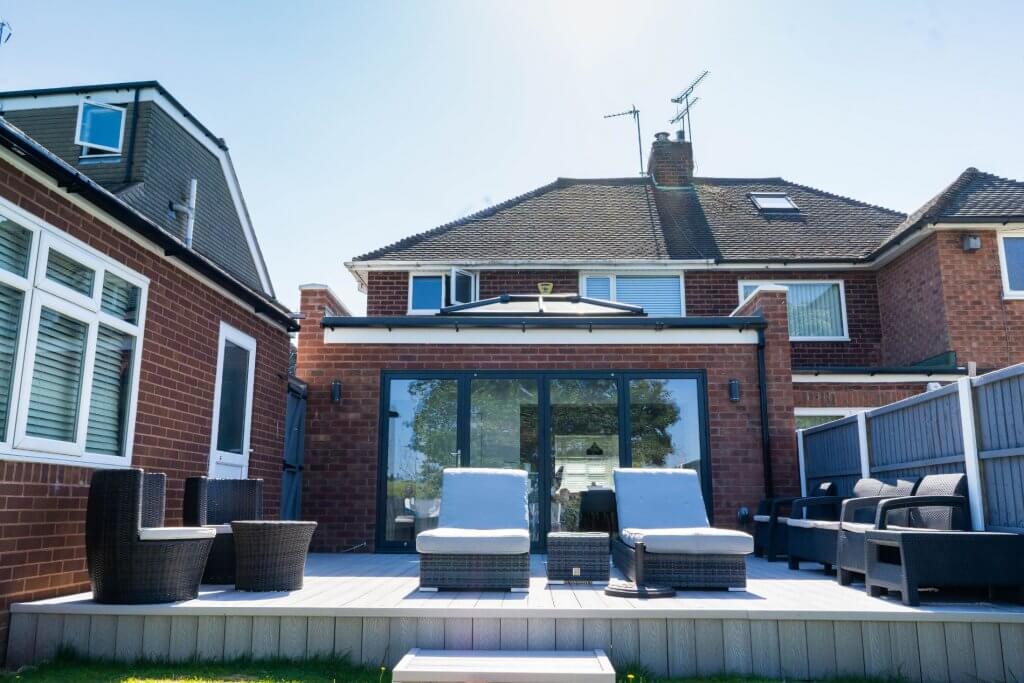
It goes without saying that all home improvement projects should add value to your property, if done to a high standard of course. We estimate that a conservatory can add anywhere between 5 and 15% to a property’s value whereas an orangery can add as much as a single storey extension.
It’s worth noting that every property is different and there are certain limiting factors to consider. For example, if your property has a very small garden, you may not want to limit this space considerably. Gardens are very desirable house feature for potential homeowners. So, if you were to limit the already limited garden space, your property may not increase in value as much post-conservatory or orangery creation.
How much warmer is an orangery compared to a conservatory?
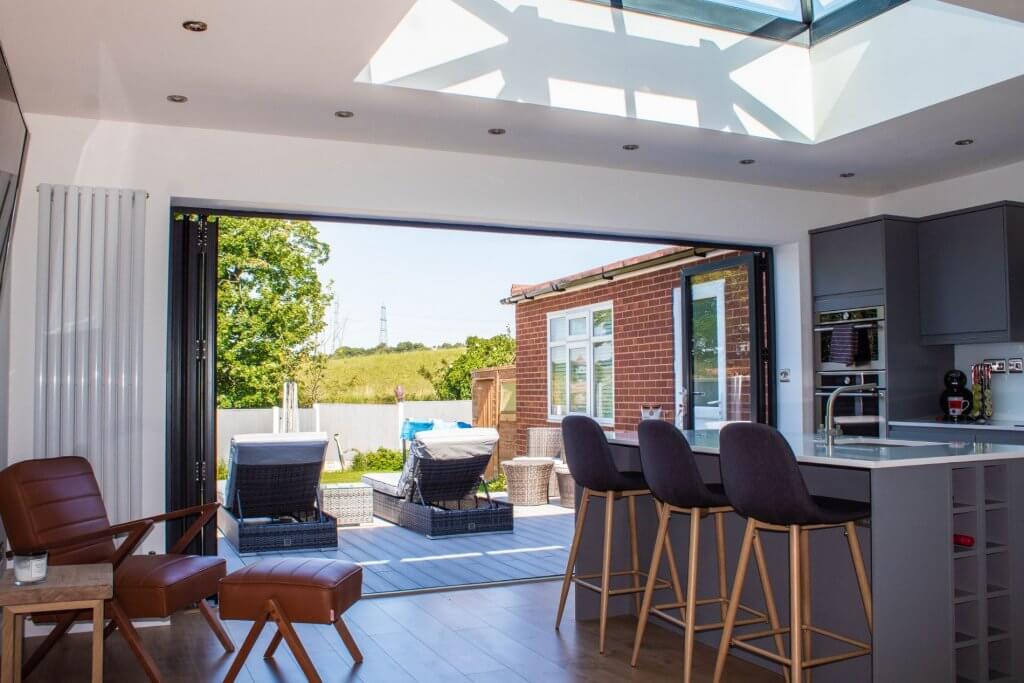
As we touched upon earlier, an orangery is primarily a brick structure which contains large widows. The brickwork provides far more insulation than a conservatory with it’s fully glazed structure.
Traditionally, a conservatory is very hot in the summer and very cold in the winter. Modern glass technology has meant that conservatories are far more energy efficient and are less prone to severe temperature fluctuations, but they are not immune my any means. When a conservatory is built using high-performance glass and thermally efficient technology such as insulated internal pelmets and super-insulated columns, that gives the build the most heat retention and temperature control possible.
Brick will always be more efficient than glass when it comes to retaining heat and maintaining a constant temperature throughout all months of the year. If you do opt for a conservatory, ensure you install the quality glass and other insulating options mentioned above as that will provide the closest climate that a orangery can offer at a comparatively lower price point.
The Ultra Modern Orangery/Conservatory Hybrid
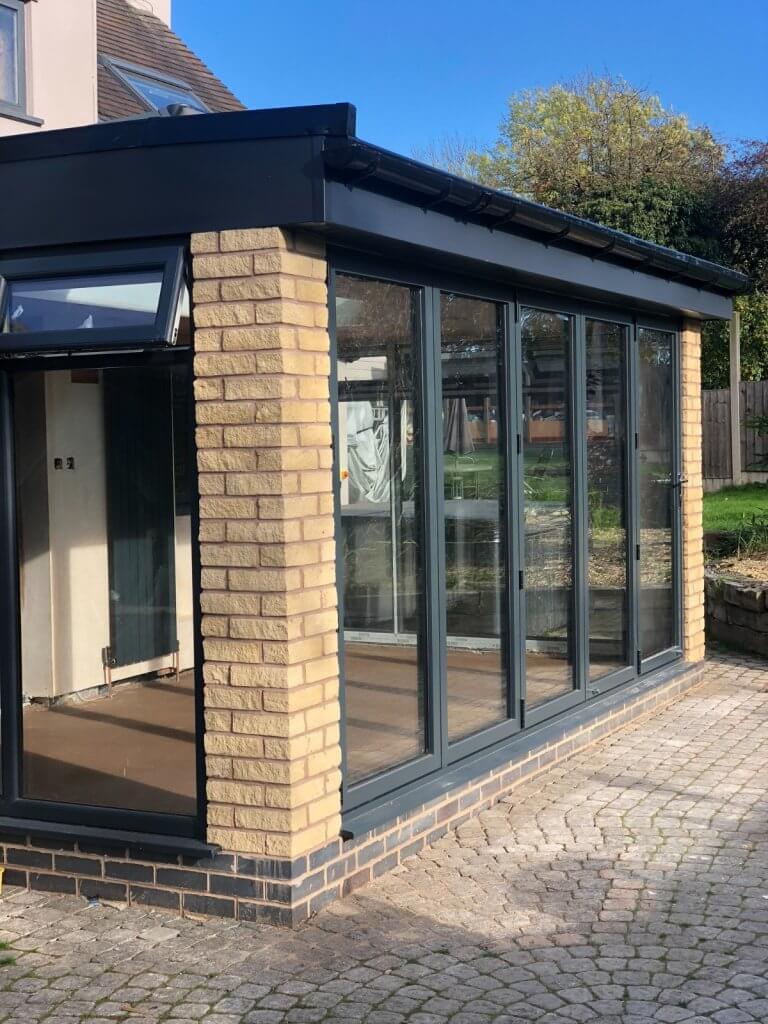
Here’s where the crossover reaches new levels. Orangeries can now be designed to include floor-to-ceiling glass, meaning the aforementioned brick pillars can be excluded. Orangeries can pretty much look like conservatories and vice-versa. Elements of both are completely transferrable which may sound perplexing. However, the best way to think about this is that you have complete customisability when it comes to your extension.
If you like certain elements from a conservatory and particular elements for an orangery, why not combine all of your favourite characteristics of each and create your dream, unique, one-of-a-kind extension! At WMDG, we are experts at creating completely bespoke extensions. If you live in the Birmingham or West Midlands area and are looking for an orangery or conservatory company near you, get in touch with our brilliant team today and you can start the journey to your home-life transforming conservatory or orangery!
Just so you know, West Midlands Double Glazing is part of the West Midlands Home Improvements Family. Across all of our various companies, our WM brand is well known and trusted throughout the region. We are also one of the only companies in Birmingham to offer 0% finance across our entire product range which includes double glazing, doors, porches, conservatories, orangeries and more! Contact us today for more information!
